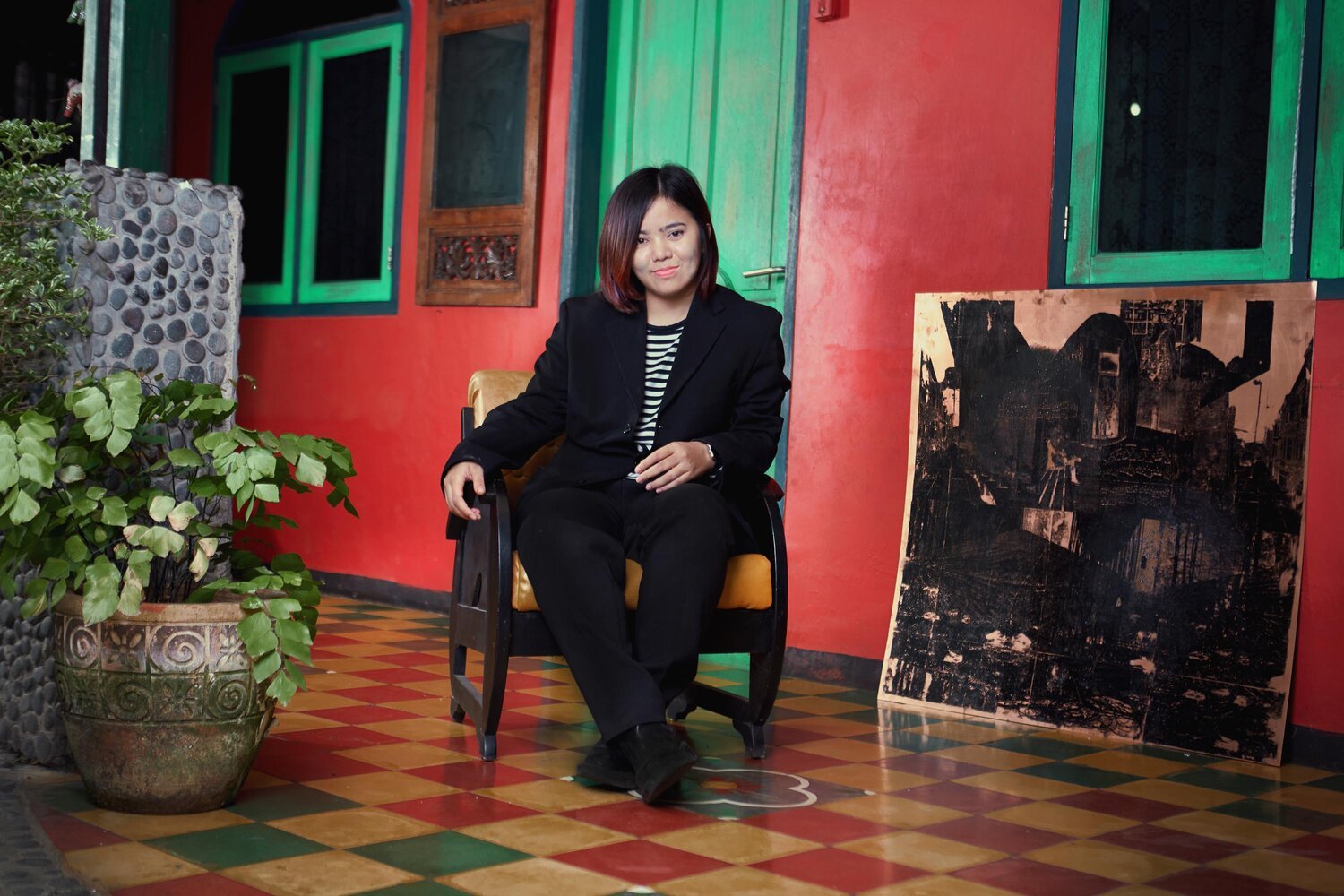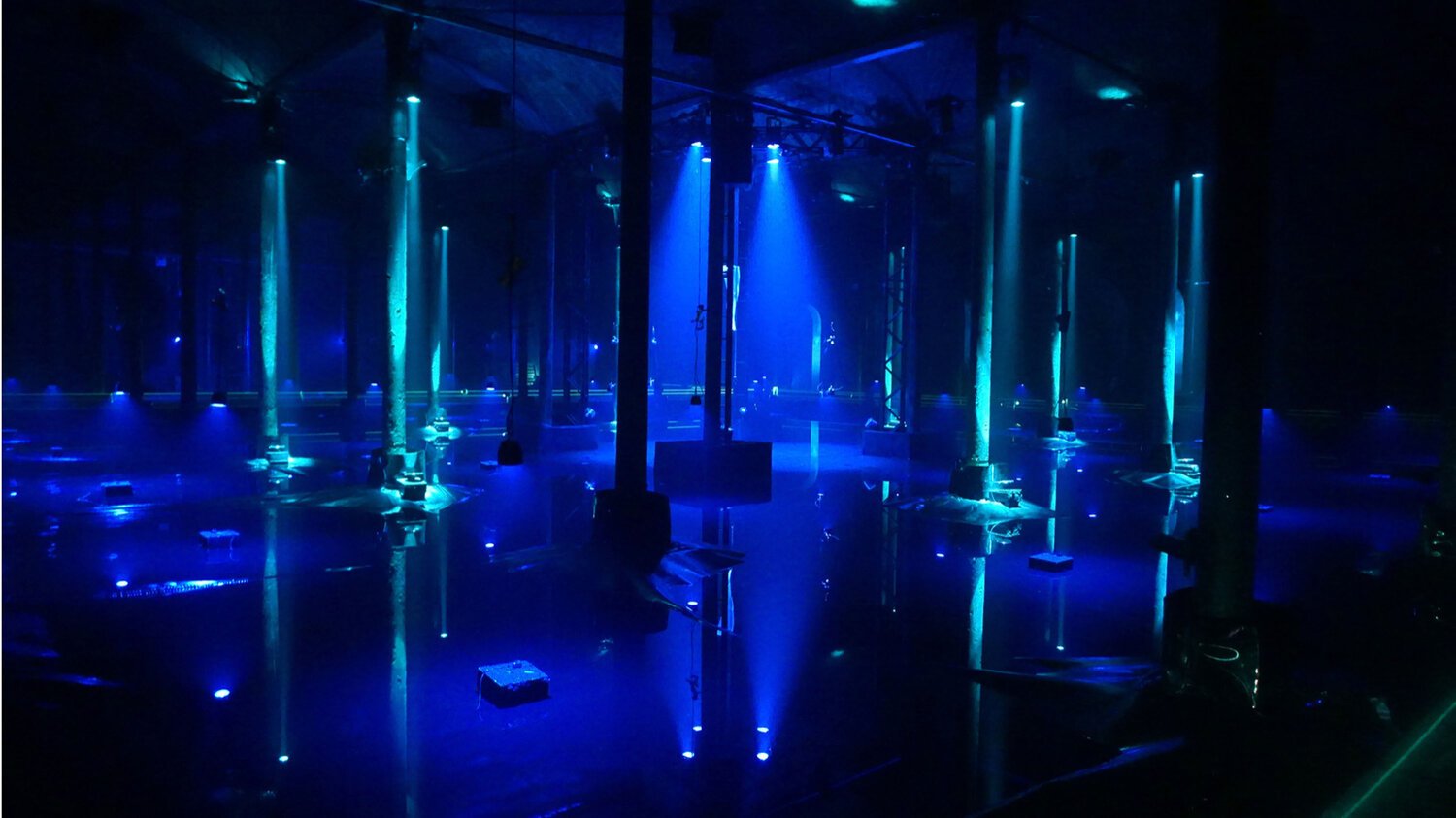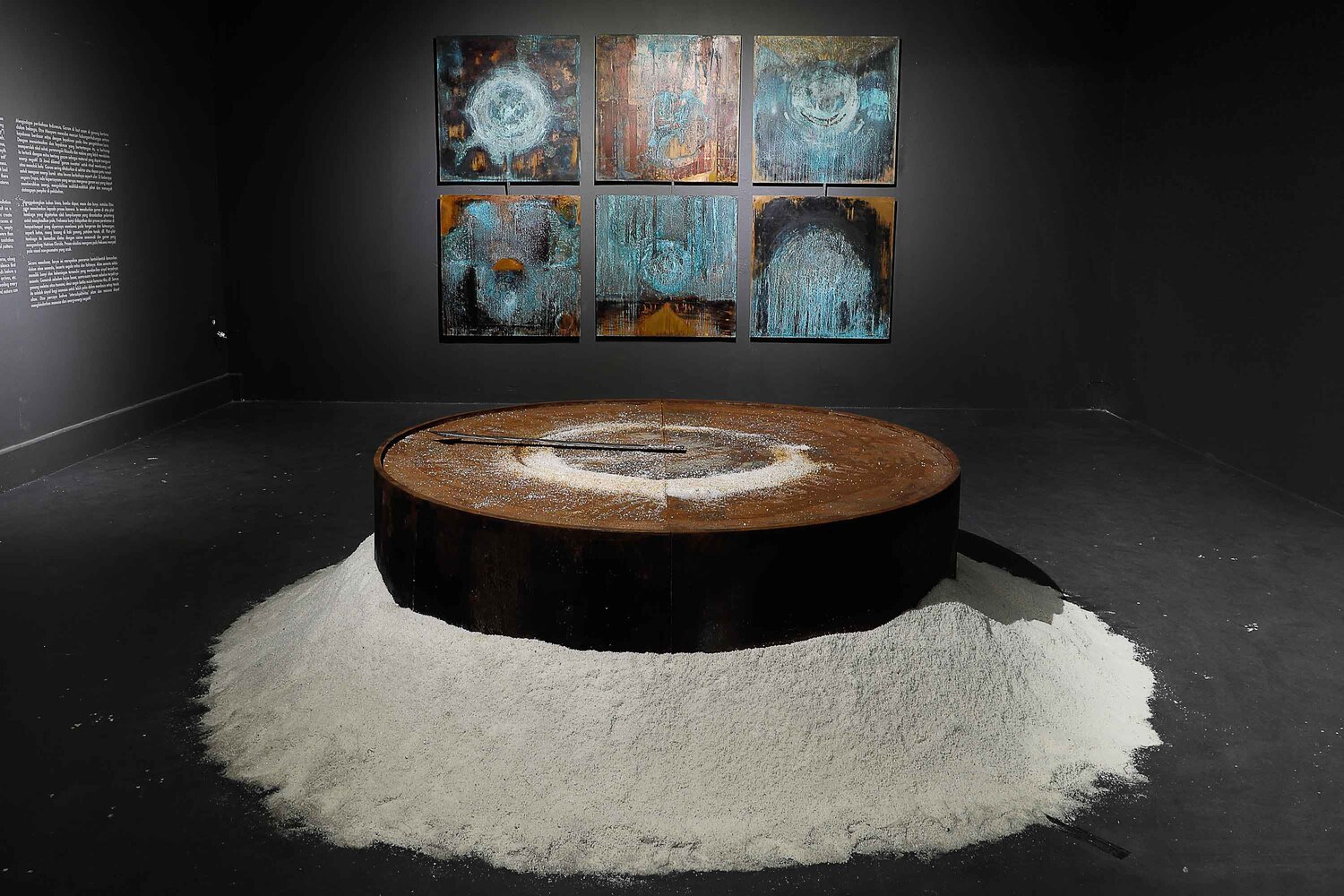Fresh Faces: Etza Meisyara
On residencies, Bandung Contemporary Art Award and ARTJOG
By Ian Tee
Etza Meisyara. Photo by Lawangwangi Creative Space.
A&M's Fresh Faces is where we profile an emerging artist from the region every month and speak to them on how they kick-started their career, how they continue to sustain their practice and what drives them as an artist. Read our profile on Indonesian artist Etza Meisyara here.
Could you talk about your background? And at what point in your life did you decide to pursue a career in art?
Music has been my hobby since I was a child. Before I was interested in fine arts, I made music and wrote songs in a professional capacity, doing freelance work for commercials and independent short films. In Bandung, I've performed at various music events as a guitarist, singer and composer. In 2009, I attended the Intermedia Art Studio programme at Bandung Institute of Technology (ITB) where my fascination in new media art grew.
While I cannot say exactly when I decided to pursue a career in art, the first work I made after graduation is a reminder of the reason why. The piece is titled 'Iqra / Baca' and it was born out of my interactions with a visually impaired woman. Our dialogues were transferred to a braille plate which I made a charcoal rubbing on. The dots that appeared then became musical notations and through this process we collaborated on the composition. The experience made me aware of the issue of accessibility and the importance of being sensitive to others. It pushed me to develop a humanist side to my interests in technology and new media.
Etza Meisyara in collaboration with Invisible Flock & British Council, 'Aurora Project', 2018, site-specific installation at Toxteth Reservoir Liverpool, UK. Image courtesy of Invisible Flock.
Could you share how you’ve maintained your practice after graduation? What are the important factors that spurred you on?
Residencies are significant as they challenge me to sharpen my ideas after graduating. I had the opportunities to gain new experiences through my time in Singapore, Japan, Iceland, Germany, France, and the United Kingdom. One particularly ambitious project was a collaboration with Mama Choir, an immigrant community in Liverpool. I recorded the members' voices as they spoke up about issues they face and how conflict has affected their lives. Thereafter, I created a musical composition out of the recording which aimed to express the tones of emotion in their story. This rhythm of tragedy and hope was the ambient sound for 'AURORA' (2018), an artistic production presented at Toxteth Reservoir in Liverpool.
People from a wide range of their backgrounds, artistic skills and knowledge are brought together in such collaboration projects. The element of social engagement also introduced me to a variety of perspectives. While it is important to experiment with new mediums and integrate technical skills into the work, I also wanted to convey a sense of humanity and speak about the many problems in our world.
Etza Meisyara, 'Passing By', 2018, exhibition installation view at Lawangwangi Creative Gallery, Bandung, Indonesia. Image courtesy of Lawangwangi Creative Space.
How did the opportunity for your first solo show come about? What was the process like preparing for it?
The opportunity for my first solo exhibition at Lawangwangi Creative Gallery came after I became one of Bandung Contemporary Art Award (BaCaa) winners in 2017. The award programme is supported by Lawangwangi Creative Space and ArtSociates, and this competition happens once every two years. Prior to winning the prize, I participated in group exhibitions at the space and ArtSociates founder Mrs. Andonowati had been tracking my practice. I have been officially represented by them since 2018.
For my first solo show, I presented 35 etchings. It was the first time I exhibited works in this medium, which I was introduced to during my studies in Braunschweig, Germany. It is fascinating how the copper surface transforms after coming in contact with certain chemicals. Like emotions, the process of oxidation on the plate cannot be controlled. These etchings feature rustic landscapes and old buildings, and the mood evoked is a sense of melancholia I felt on my lone adventures in foreign places. For me, creating art is like working on a musical composition, following the rhythm of emotion.
Who has been a mentor or an important artistic influence? And why?
One of my key influences is the sound artist Christine Sun Kim. As a deaf person, she explores ways to experience sound beyond the aural impact it has on our ears. A range of vibrations and frequencies come into play in her work through the use of transducers, audio speakers, piano wires, helium balloons, and even her own breath. I am interested in artists who expand our sensory capabilities and in Christine's work, she thinks about sound conceptually as a form of social currency.
Etza Meisyara, 'Iqra Baca' (detail), 2013, mixed media installation. Image courtesy of artist.
What was one important piece of advice you were given?
This isn't from anyone in particular but I've always found it important to pay attention to and understand our environment through all the senses. This influences how I create my work and live my life as well. The universe has its own ways of communicating to us even if all we can hear is silence. It gives us signals whenever danger is ahead. For example, a thunderbolt reverberates before a big rain; or animals pick up frequencies and escape to higher ground ahead of a volcanic eruption or tsunami.
I created a work titled 'Garam di Laut, Asam di Gunung, bertemu di Belanga' (Salt in the Sea, Acid on the Mountain meets in a one pot) by translating these sonic frequencies to visual form. What it means is that no matter how far or different, two lovers would eventually meet at the one place at the right time. For me, that is the metaphor of harmony between two different elements. The work was presented at ARTJOG MMXIX 'Arts in Common: Common Space' and the message was that humans need to be more sensitive to the signs given by nature. Only then can we have a harmonious relationship.
Etza Meisyara, 'Garam di Laut, Asam di Gunung, bertemu di Belanga', 2019, installation view at 'Arts in Common: Common Space', Jogjakarta National Museum, Indonesia. Image courtesy of ARTJOG.
Could you share your favourite art space or gallery in Indonesia? Why are you drawn to that space and what does it offer to you/ your practice?
My favourite galleries are mostly in Yogyakarta. Cemeti Art Space focuses on art exhibitions and projects both by Indonesian and foreign artists; while Ruang MES56 supports experimental approaches to visual arts in Indonesia. Both spaces help expand the networks of Southeast Asian contemporary artists through their residency programmes.
What are your hopes for your own local art scene, and regionally as well?
Speaking about the contemporary art scene in Indonesia, it cannot be understated that Bandung, Jakarta and Yogyakarta are each distinct in their characteristics. Different habits, environments and cultures greatly affect the artistic style and disposition in each city. Having experienced all three, I must say that they have influenced my outlook.
In Indonesia, we have a motto: "Bhinneka Tungal Ika". The Old Javanese phrase translates to mean "unity in diversity" or "oneness, out of many''. I think it’s still important to retain diversity and authenticity, even as artists compete with each other.
Even though Indonesia now has Museum MACAN, its first international modern and contemporary art museum, in Jakarta. There's still room for improvement in terms of documentation and public awareness of contemporary art in the country. We need more public institutions as well as print and digital publications to increase accessibility. This is such that the subsequent generations will be able to learn and perhaps even envision the possibility of becoming artists themselves.


















